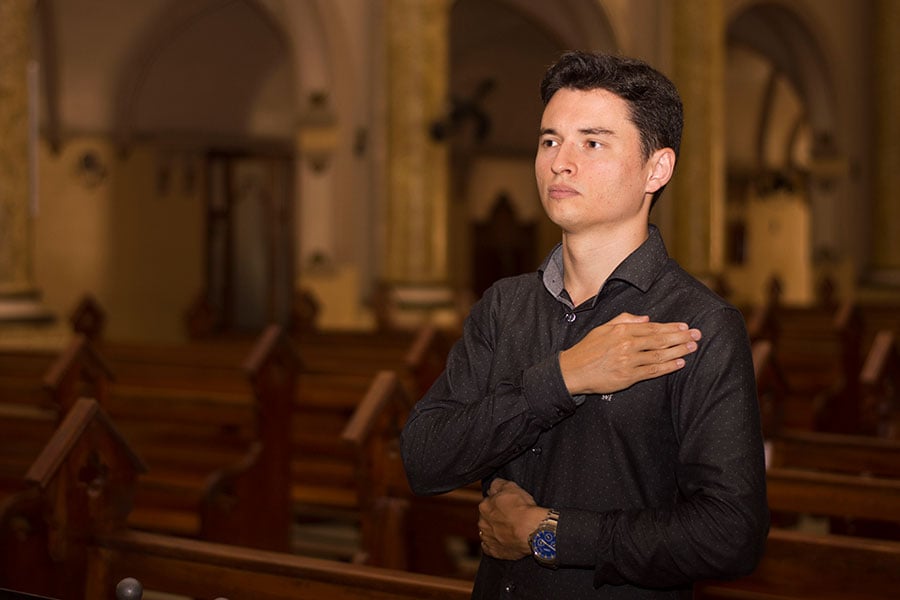What is the significance of the Sign of the Cross

Marco Tulio de Miranda/Cathopic.com
In the previous installment of “Understanding the Mystery,” Father Thu Nguyen explained why and when we kneel, sit, and stand during Mass. Knowing the reasons behind our postures and gestures helps us enter into the faithful celebration of the Mass with more reverence and intentionality.
In this column, Fr. Nguyen, the diocesan director of Liturgy and Worship for the Diocese of Fort Worth, explains the meaning of some of the gestures we see in Mass, particularly the Sign of the Cross.
When Catholics enter the church, we dip our fingers in holy water and make the Sign of the Cross, then we genuflect before entering a pew. What is the reason for this tradition?
Fr. Nguyen: Why do we do that? Because we are entering the home of our Lord.
In parochial school, the religious sisters teach us that using the holy water reminds us of our own baptism, while we trace the cross over our whole body.
Before we enter the pew, we genuflect and make the Sign of the Cross again because of the sacredness of the tabernacle, where Christ is present.
Genuflecting is similar to adoring — reverencing — Who is here, and Who is my Lord.
Mass begins with the Sign of the Cross and it is included several times during Mass. What is the significance of that gesture?
Fr. Nguyen: The Sign of the Cross signifies the redeeming salvific act by Jesus: death on the cross for humankind. The cross reminds us in a physical way of the paschal mystery: Jesus’ passion, suffering, death, resurrection, and ascension.
When else does the assembly make the Sign of the Cross?
Fr. Nguyen: In addition to the beginning of Mass, the second time the assembly makes the Sign of the Cross is before the Gospel is read. We make three crosses: over the head, praying to open my mind to understand the Word of God I’m about to hear; over the lips, to open my lips so I may speak these words of Jesus; and over the heart, to open my heart to love the Word of God. We are preparing ourselves to receive the word of Jesus.
You’ll see the presider trace the cross over the book of the Gospels.
When the gifts are presented, the presider will make the Sign of the Cross to bless them, praying that the Holy Spirit will transform the gifts into the Body and Blood of Christ. He also makes a Sign of the Cross during Eucharistic Prayer, and finally he blesses the people with a Sign of the Cross at the end of Mass.
What else can you tell us about making the Sign of the Cross?
Fr. Nguyen: Many have the tradition to make the Sign of the Cross when passing a cemetery or a Catholic church. That’s a sign of reverence to those sacred places.
The assembly in Mass have been freely making the Sign of the Cross in many places. It is not magical, and the people have made it into a habit to do without understanding.
Let’s say I give you Communion and you make a silent cross. What does that mean? What is the focus of your thoughts at that point? It should be that the Body of Christ is inside of me.
We need to recognize when we make the Sign of the Cross, we are not only remembering but joining ourselves to the paschal mystery: the suffering, death, resurrection, and ascension of Christ.
Father Thu Nguyen serves as pastor at St. Paul the Apostle Church in Fort Worth and Director of Liturgy and Worship.
